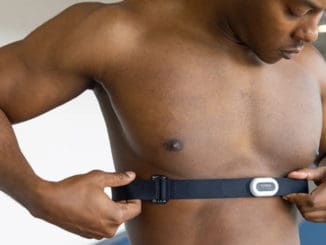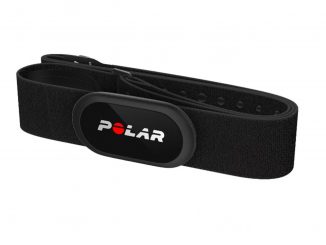While cardiovascular exercise is crucial to physical fitness, “cardio” is a blanket term that could cover a wide range of exercises. Learn about heart rate training (HRT) for specialized workouts and results.

What is Heart Rate Training?
Heart Rate Training (or HRT) utilizes your heart rate to optimize intensity and help you to reach your specific fitness goals. While HRT can help you to understand different exercise intensities based on the way that they feel, not all is left up to intuition. HRT produces quantifiable progress by providing a measurement of your effort. Monitoring your heart rate during your workout can help you determine if you are taking it too easy, overtraining, or getting it just right.
The frequency, duration, and intensity of exercise contribute to the training impulse. An excessive impulse causes overtraining, a condition in which performance is deteriorated by too much stimulation and inadequate recovery. Training in the appropriate heart rate zone can help you to avoid overtraining syndrome.
Heart rate training is a great fit for fan bikes (like the Airbike), indoor rowing, and running on treadmills.
Your ideal run is affected by several factors, including basal heart rate, effort perception, and current fitness level. HRT is an effective way to create a workout that is just as unique as you are. By utilizing the heart zone ranges covered later in this article, you can achieve specific effects. Some zones are better at burning body fat, while others improve work capacity or cardiovascular endurance.

While heart rate monitors are available in a range of prices, they are relatively cheap compared to other fitness gadgets. A heart rate monitor contains a sensor that reads and records your pulse. This sensor is often attached to a strap that you wear around your chest, arm, or wrist. Popular today, monitors may come as features on fitness training rings or watches. Even shoes and socks are being created to track heart rate, steps, and distance.
The Polar H10 Chest Strap Heart Rate Monitor is something I have used, and would recommend.
You can also simply count your pulse for ten seconds, then multiply by 6. This requires you to stop what you are doing though, so it isn’t practical for all workouts.

How to Calculate Your MHR (Maximum Heart Rate)
The most common method to determine heart rate is to subtract your age from 220. For example, if you are 25 years old, then 195 is your max heart rate. Unfortunately, this method is prone to inaccuracy, especially for athletes who are older than 50.
For a more accurate estimation, try the Heart Rate Reserve (HRR) method. This equation used by HRT expert Bryant Walrod, M.D. is 208-(.7 x age). He posits that “this formula tends to be more accurate [than 220 minus age] as you get older.”
The Heart Rate Zones
Heart rate can be divided into three ranges with varying benefits:
- Aerobic/low intensity: 50-75% of MHR or HRR. In this range, fat is used for fuel.
- Anaerobic/moderate intensity: 75-85% of MHR or HRR. Overall fitness improves when working in this zone.
- Anaerobic/high intensity: 85-95% of MHR or HRR. This near-maximal effort can only be sustained for short periods of time.
When most people think of cardio, they are imagining aerobic exercise. This type of activity requires oxygen consumption, so it improves your muscles’ ability to use oxygen when performed regularly. Efficient oxygen consumption burns fuel from food easily and sustains exercise.
Anaerobic exercise, like lifting weights, sprinting, and climbing stairs does not increase oxygen capacity. However, it will raise your heart rate, so monitoring can still be useful to reach beneficial zones and avoid overexertion.

How to Use Heart Rate Training
For fat burning, it is important to maintain low-intensity exercise for at least 35 minutes. Longer sessions are better, as long as the heart rate stays in the appropriate zone. High-intensity interval training (HIIT) is designed for the 85-95% range, but it should not be attempted by beginners. There are safer options for less advanced athletes to utilize interval training.
You are not required to stay in the same zone for your entire workout. You could begin on the low end of the 50-75% range to warm up, and proceed to the higher end for weight training. Finish your training session with a 40-45 minute bout of steady state cardio at 75-85% of your MHR to improve your cardiovascular fitness.
Whether you prefer indoor or outdoor running, you can use HRT in several workout structures. Tempo runs, similar to interval training, utilize multiple heart rate zones. A monitor can be used to ensure that a recovery run does not turn into a race.
The same structures used for runs may be used for cycling or rowing. The important thing here is to find an activity that you enjoy enough to do regularly.
In Summary
In summary, heart rate training provides quantifiable measurements that can be used to customize your training to receive the results you want.

Tim is the founder of FitAtMidlife.com – an avid gym rat for 30+ years, he’s a reviewer of many, many shoes – and founder of the Speed Bag Gathering – the world’s only gathering of speed bag punching enthusiasts. See more gym reviews at Tim’s YouTube channel.




Yikes – yes that was a typo. It’s been corrected and thanks for letting me know. I’m glad to hear you enjoyed the article.
Hi,
You say:
For a more accurate estimation, try the Heart Rate Reserve (HRR) method. This equation used by HRT expert Bryant Walrod, M.D. is 208-(7 x age).
I assume you mean the equation is 208 – ( 0.7 x age).
Great article!
RJ